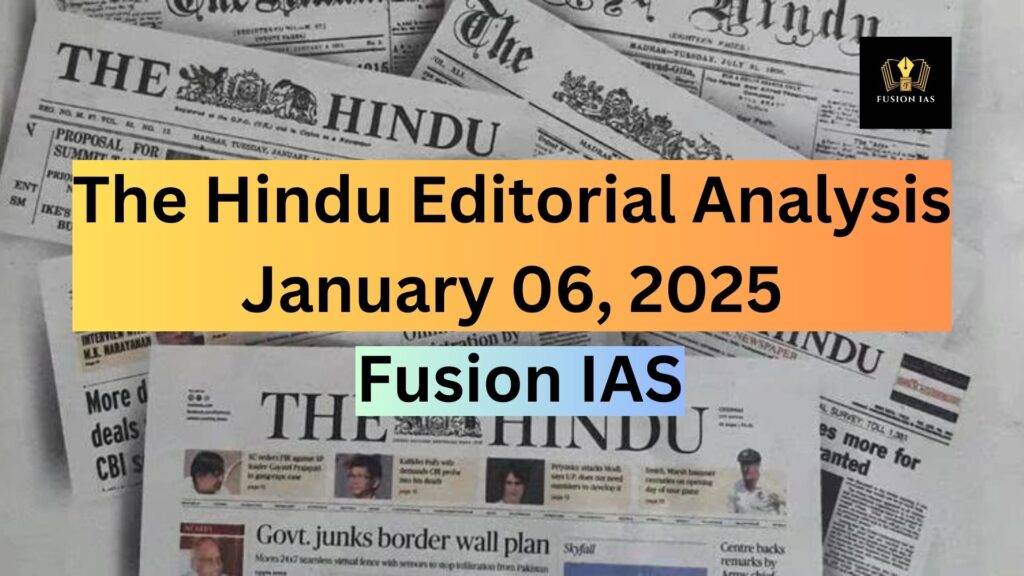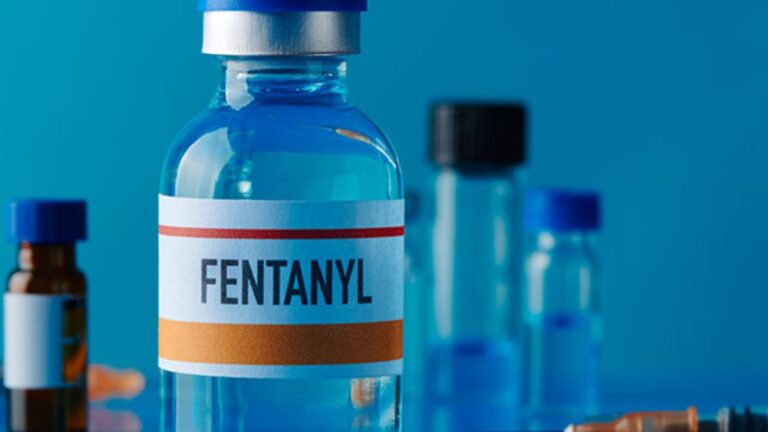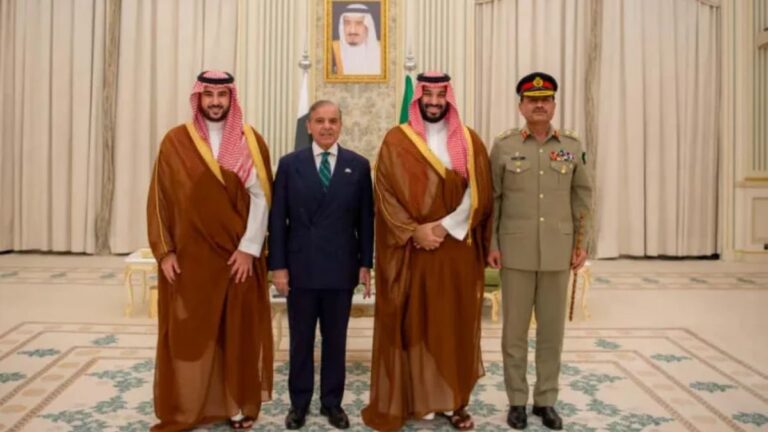
Analyzing editorials from The Hindu is a crucial component of Civil Services Examination preparation. These editorials offer insightful perspectives on current national and international issues, fostering critical thinking and enhancing one’s understanding of diverse topics relevant to the UPSC syllabus. Through this analysis, aspirants can refine their skills in comprehension, articulation, and issue-based evaluation, which are essential for the Preliminary, Mains, and Interview stages of the examination.
1. Symbolism Must Not Become Misplaced Showmanship
Introduction: The controversy over the removal of the iconic 1971 war painting highlights the importance of valuing symbols for their quality and effect.
The Power of Symbols
Symbols carry immense intangible value as they represent significant facets of identity, history, and purpose. Leaders have historically used symbolism effectively to convey their vision and ideals. The recent removal of a painting symbolizing the surrender of the Pakistani Army to India during the 1971 war from the Indian Army Chief’s office complex sparked widespread public emotions. The painting, now relocated to a conference center named after Field Marshal Sam Manekshaw, underscores the vital role symbols play in shaping perceptions and preserving historical narratives.
This episode is a reminder that history must be embraced in its entirety to avoid skewed interpretations. As institutions adopt practices inspired by distant historical events, they must ensure that these efforts are not fragmented but rooted in comprehensive truth.
Facets of Symbolism
Symbols encapsulate identity, leadership, direction, faith, and competency. Several examples demonstrate their importance:
- Identity and Resilience:
After its establishment, Israel ingrained the symbolic significance of Fort Masada into its military tradition. New recruits swore allegiance to the nation at the fort, evoking the resilience of 960 Jews who resisted Roman forces in 73 CE. - National Pride:
The flypast of NASA’s retired space shuttle Discovery over Washington in 2012 embodied the pride of a nation that had achieved remarkable milestones in space exploration. - Leadership and Duty:
Leaders like U.S. President Harry S. Truman and India’s Prime Minister Jawaharlal Nehru used symbolic items—placards or poetry—to remind themselves and their citizens of their responsibilities. Truman’s desk sign, “The Buck Stops Here,” and Nehru’s favorite Robert Frost lines underscored their dedication to their respective roles. - Faith in Adversity:
At the Siachen Glacier Base Camp, soldiers pay homage to “O.P. Baba,” a legendary figure symbolizing faith and protection in extreme conditions. This tradition transcends religion and unites soldiers in their belief that they will return safely.
The Iconic 1971 Painting
December 16, 1971, marks a defining moment in independent India’s history—a day of resounding victory over Pakistan. The surrender of 93,000 Pakistani soldiers was a monumental achievement, symbolizing India’s military and political competency. The painting of this historic event, once displayed in the Army Chief’s office, conveyed India’s finest hour to visiting dignitaries and foreign military leaders.
The replacement artwork, intended to represent the future vision of the Indian Army, has sparked debate. While future aspirations are important, the symbolic weight of the 1971 painting as a testament to India’s historical triumph is unparalleled.
The Ladakh Statue Controversy
The installation of Shivaji’s statue near Pangong Tso in Eastern Ladakh has also raised eyebrows. Critics argue that a symbol more rooted in the region’s history, such as a tribute to Zorawar Singh, the legendary Dogra general known for his forays into Tibet, would have been more appropriate. Effective symbolism should resonate with the local context; otherwise, it risks becoming superficial and disconnected.
Conclusion
Symbolism is a potent tool for inspiring identity, pride, and purpose. However, its effectiveness hinges on thoughtful selection and context. Misplaced symbols risk diluting their intended message and turning into mere showmanship. As India continues to navigate its historical legacy and future aspirations, preserving the sanctity and relevance of its symbols remains essential.
Source: TH
2. Nothing Alarming: On China’s HMPV Cases
Context: Reports of many HMPV cases in China reflect heightened surveillance, not an unusual outbreak.
Seasonal Respiratory Illnesses in Focus
Five years after the SARS-CoV-2 outbreak in Wuhan, China is witnessing a rise in acute respiratory diseases, including those caused by the human metapneumovirus (HMPV), influenza, and respiratory syncytial virus (RSV). These cases, particularly affecting children and the elderly in northern provinces, align with seasonal patterns. According to Chinese officials, the overall number of respiratory cases in 2024 is projected to be smaller than in 2023.
While international agencies like the World Health Organization (WHO) and the U.S. Centers for Disease Control and Prevention (CDC) have not raised concerns, Indian media has sensationalized the situation, labeling it an “outbreak.” The Union Health Ministry’s Joint Monitoring Group, however, has clarified that the situation in China is not unusual, attributing the surge to seasonal flu pathogens.
Understanding HMPV
The HMPV virus was first identified in 2001 in the Netherlands. It predominantly causes upper and lower respiratory tract infections, particularly in children under five, the elderly, and immunocompromised individuals. While most cases result in mild illness, severe infections requiring hospitalization can occur in vulnerable populations.
Also Read: Human Metapneumovirus (HMPV) Symptoms and Transmission: What You Need to Know
Globally, HMPV has been a significant cause of respiratory illness. A 2021 study linked it to 3%-10% of hospital admissions and 1% of acute lower respiratory infection-related deaths in children under five in 2018. Younger children, particularly those under six months and in low-income countries, face the greatest risk.
Heightened Surveillance in China
China’s increased detection of HMPV cases reflects enhanced surveillance and testing, especially in children under 14. Conversely, India lacks widely available, affordable diagnostic tests for HMPV. Testing for the virus is limited to a few laboratories, primarily under the Indian Council of Medical Research (ICMR).
India’s Diagnostic Gaps
India’s response to HMPV has been reactive, with steps now being taken to expand testing capacity. The absence of inexpensive, approved diagnostic tests has hindered routine detection of HMPV in patients with acute respiratory illnesses. A regulatory framework for rapid approval of diagnostic tests is urgently needed to address outbreaks of both novel and lesser-known pathogens.
Conclusion
The rise in HMPV cases in China is consistent with seasonal trends and does not warrant undue alarm. However, it underscores the need for heightened vigilance, robust diagnostic infrastructure, and proactive regulatory measures in India to address respiratory illnesses and emerging pathogens effectively. Proactive steps in these areas will enhance preparedness for future health challenges.
Source: TH
3. No Secret Affair: On the Draft Digital Personal Data Protection Rules, 2025
Transparency is key to deliberating the draft Digital Personal Data Protection Rules, 2025.
An Overdue Framework
The draft Digital Personal Data Protection Rules, 2025, mark a crucial step towards enforcing Indians’ fundamental right to informational privacy. This right was firmly established by the Supreme Court in the Justice K.S. Puttaswamy vs. Union of India (2017) judgment. The rules aim to operationalize the Digital Personal Data Protection Act, passed over a year ago, addressing a prolonged seven-year gap that has likely impacted data privacy amidst rapid digitization.
The draft rules provide guidance on several critical aspects:
- Ensuring online services clearly communicate the purpose of data collection.
- Protecting children’s data.
- Establishing the Data Protection Board of India (DPBI).
- Setting standards for government exemptions from the Act.
- Outlining protocols for addressing personal data breaches by data fiduciaries.
However, key concerns, such as the institutional design of the DPBI, remain unresolved, reflecting the limitations of subordinate legislation.
The Problem of Secrecy
Despite the high stakes for individuals and tech firms alike, the government has opted for a secretive approach in formulating these rules. Since the Justice B.N. Srikrishna Committee’s initial efforts to draft a data protection Bill, stakeholder inputs have not been publicly disclosed. This practice persists, raising questions about transparency in policymaking.
For legislation with significant implications, an open and deliberative process is indispensable. Stakeholders, including industry associations and the general public, must have equal access to each other’s views during consultations. Transparency in such discussions fosters trust and ensures a balanced approach to addressing diverse concerns.
Key Principles and the Path Forward
To ensure meaningful progress, the rule-making process must adhere to the core principles of data protection law:
- Minimizing data collection.
- Promoting transparency and disclosures.
- Penalizing negligence in safeguarding user data.
- Discouraging surveillance by both private entities and government agencies.
Timeliness is equally critical. The seven-year delay in operationalizing the right to data privacy risks undermining public confidence in the government’s commitment to protecting individual data from misuse.
Conclusion
The draft rules are a much-needed step, but their effectiveness depends on a transparent and participatory process. The government must prioritize openness to restore trust and ensure that the rights affirmed in 2017 are not delayed further. A robust data protection framework is essential not just for safeguarding individual privacy but also for fostering accountability among private and public entities in the digital age.
Source: TH
4. The Outlook for India in 2025
India stands at a crossroads of opportunities and challenges, demanding deft policymaking in 2025.
Global Context: A Shifting Landscape
While India has maintained economic growth and relative political stability, 2024 highlighted global uncertainty, particularly in Europe and West Asia. Conflicts in Gaza and Ukraine underscore a world in flux, presenting new challenges for India in navigating a complex geopolitical landscape.
Neighbourhood Concerns
- China:
Despite recent talks and disengagement efforts along the Line of Actual Control, the India-China border conflict remains unresolved. China’s strategic initiatives, such as strengthening ties with the Global South and promoting its Global Security Initiative, aim to outflank India on the global stage. - South Asia:
India’s neighbourhood policy faces significant strain. The change in Bangladesh’s leadership to a regime less friendly towards India and strained ties with Nepal, Sri Lanka, and Bhutan reflect a region in flux. Pakistan and Afghanistan continue to pose traditional and evolving challenges. - West Asia:
The fall of Syria’s Assad regime and the rise of the Sunni-led Hayat Tahir al-Sham (HTS) could reshape regional dynamics. This shift could diminish Iran’s influence, weaken the pro-Palestine movement, and strengthen Israel and Türkiye. India must recalibrate its strategy to address these developments, particularly given its diverse Shia and Sunni population.
Emerging Challenges
- Cybersecurity:
The digital threat landscape is expanding exponentially. Cyberattacks, including ransomware and denial-of-service incidents, surged in 2024 and are expected to escalate in 2025. Protecting critical infrastructure and enhancing cybersecurity resilience must be a top priority. - Technological Convergence:
The integration of emerging technologies is creating vulnerabilities in national infrastructure, requiring a proactive approach to safeguard against potential disruptions.
Policy Imperatives
India’s leaders must adopt a balanced strategy that prioritizes:
- Strengthening regional partnerships.
- Enhancing domestic cybersecurity frameworks.
- Leveraging economic stability to influence global platforms.
- Addressing emerging geopolitical shifts with agility and foresight.
2025 offers India an opportunity to solidify its global standing, but it demands careful navigation of both domestic and international challenges.
Source: TH
5. India Needs to Prioritise Preventive Care
India is grappling with a dual challenge in its healthcare system: rising life expectancy coupled with an increasing burden of non-communicable diseases (NCDs). Conditions like heart disease, diabetes, and cancer are not only claiming more lives but are also straining the nation’s healthcare resources. The focus must shift from reactive treatment to preventive care to address these challenges effectively.
The Growing NCD Burden
- NCD Mortality: These diseases accounted for 65% of all deaths in 2022, up from 50% in 2010-13.
- Rising Prevalence: Hypertension affects one in four adult men, and one in eight is diabetic. Additionally, cancers such as breast, lung, and cervical cancer are being diagnosed earlier than the global median age.
- Economic Costs: The World Health Organization (WHO) projects the economic burden of NCDs in India to exceed ₹280 lakh crore by 2030, equivalent to ₹2 lakh per household.
The Economic Strain
While the Union Budget 2024 allocated ₹87,657 crore to the Ministry of Health, this remains insufficient against the escalating costs of healthcare. Household health expenditure, though declining, still constitutes a significant portion, with many families bearing catastrophic out-of-pocket costs.
The Role of Preventive Care
Regular screenings can play a transformative role in reducing disease incidence and healthcare costs:
- Comprehensive health checks can identify high-risk individuals early, enabling timely intervention.
- Tests like mammograms, pap smears, and low-dose CT scans can significantly improve outcomes in diseases like cancer and heart conditions.
- Early detection reduces the need for expensive treatments and improves survival rates.
Challenges in Adopting Preventive Care
- Cost Barrier: Comprehensive health checks currently cost ₹8,000 to ₹15,000 in metro cities, making them unaffordable for many.
- Limited Tax Incentives: The current tax deduction of ₹5,000 under Section 80D for preventive health checks has remained stagnant for a decade despite rising healthcare costs.
Policy Recommendations
- Increase Tax Deductions:
- Raise the tax deduction limit under Section 80D to ₹15,000 in the Union Budget 2025-26.
- This would encourage preventive screenings and reduce long-term healthcare costs.
- Expand Access through Public-Private Partnerships:
- Use Ayushman Bharat Health and Wellness Centres to enable low-cost, AI-driven screening programmes.
- Encourage private healthcare providers and insurers to offer subsidised screening packages for individuals aged 40-60 years.
- Targeted Funding:
- Allocate proceeds from the healthcare cess or higher GST on tobacco and sugar products to subsidise preventive health services.
- Public Awareness Campaigns:
- Enhance awareness of the importance of preventive care through government and private initiatives.
Conclusion
Investing in preventive care is not just a health imperative but an economic necessity. By strengthening early intervention mechanisms, subsidising screenings, and incentivising preventive health checks, India can alleviate the growing burden of NCDs. Prioritising preventive care today will pave the way for a healthier, more resilient, and economically stable future.
Source: TH
6. A Stampede, a Rift, and a Thaw
The tragic stampede at a special screening of Pushpa 2: The Rule in Hyderabad’s Sandhya Theatre in December 2024 exposed the fraught relationship between the Telugu film industry and the Telangana government. The incident not only highlighted lapses in safety but also deepened political and industry tensions.
The Tragic Incident
On December 4, actor Allu Arjun’s surprise entry at the theatre led to a stampede, claiming the life of M. Revathi and leaving her son critically injured. Following this, a case was filed against the theatre management, Allu Arjun, and his security team.
The situation escalated when Allu Arjun thanked the Andhra Pradesh and Telangana governments at a success event but momentarily forgot to mention Telangana Chief Minister Revanth Reddy, leading to speculation of political motives.
Arrest and Allegations
The actor’s arrest on December 13, followed by his release on interim bail the next day, fueled accusations of political vendetta. Many alleged that his lapse in mentioning the Chief Minister was perceived as an intentional slight. Congress leaders and Bharat Rashtra Samiti (BRS) working president K.T. Rama Rao weighed in, accusing Allu Arjun of disrespect and irresponsibility.
Allu Arjun denied the allegations, terming them “character assassination” and stating that he was unaware of Revathi’s death at the time of the incident. Hyderabad Police Commissioner C.V. Anand later released a video contradicting the actor’s claims.
The Government’s Response
In the aftermath, the Telangana government announced a ban on special shows, citing the risks associated with overcrowded screenings. This decision raised concerns within the film industry, as many high-budget films rely on such shows for significant revenue.
Historical Context and Political Underpinnings
The relationship between the film industry and Telangana politics has long been complex. During the Statehood agitation, the Telangana Rashtra Samiti (now BRS) allegedly targeted professionals from Andhra Pradesh. Over time, the industry forged ties with the BRS, a shift that reportedly angered Congress, which had earlier extended land and tax incentives to the industry.
Signs of Reconciliation
A meeting between film industry leaders and Chief Minister Revanth Reddy on December 26 hinted at a possible thaw. The Chief Minister reassured the industry of government support while emphasizing the importance of law and order. Dil Raju, the newly appointed Film Development Corporation chairman, expressed optimism about bridging the gap between the government and the industry.
The Way Forward
The incident underscores the need for the government and the film industry to prioritize public safety. Measures like better crowd management, stricter regulations for special screenings, and collaborative efforts can prevent such tragedies in the future.
As Telangana aims to position Hyderabad as a global hub for film production, the focus must remain on fostering a harmonious relationship between the government and the industry while ensuring no lives are lost in the pursuit of cinematic success.
Source: TH
Disclaimer:
This analysis is based on the editorial content published in The Hindu and is intended solely for informational and educational purposes. The views, opinions, and interpretations expressed herein are those of the author of original article. Readers are encouraged to refer to the original article for complete context and to exercise their own judgment while interpreting the analysis. The analysis does not constitute professional advice or endorsement of any political, economic, or social perspective.
Follow Fusion IAS




